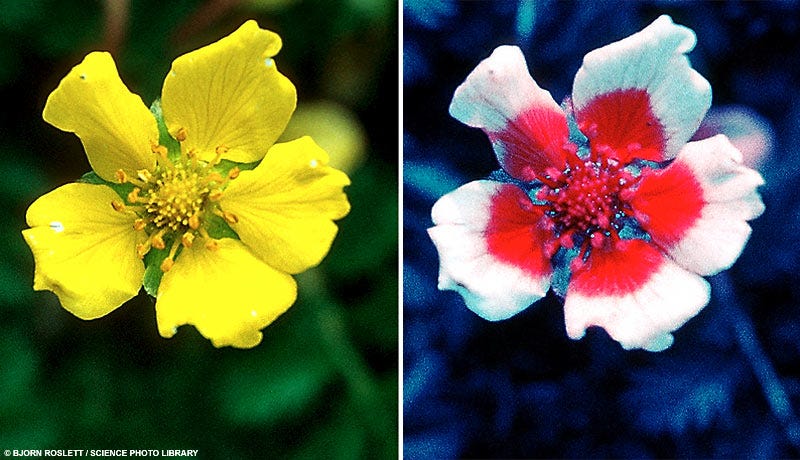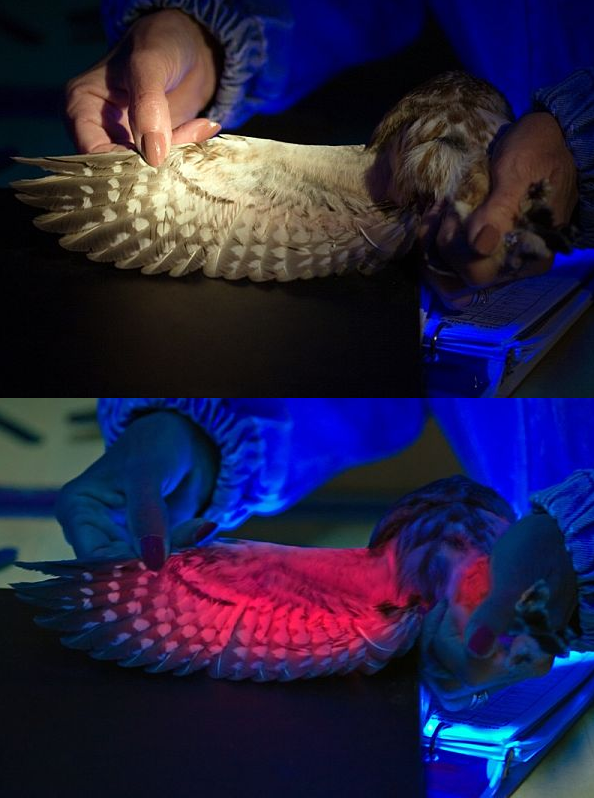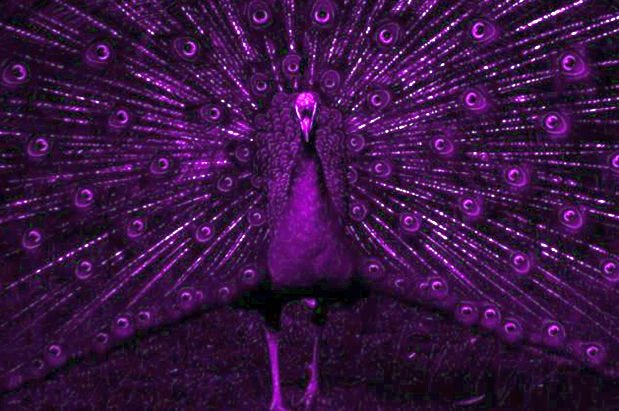
Last time, I promised you a spooky wildlife story because it was Halloween. Now, keep in mind that when I say spooky, it means something different than scary. Did you know that there is a whole other world of visuals right in front of us that we can’t even see, but that influences the interactions between animals and plants everyday?
It’s nothing complicated; it all has to do with light. Light exists in the form of particles called photons. Photons have no mass and behave both like particles and like waves. Because of this, scientists often refer to light by its wavelength, the distance over which the shape of the wave repeats. Wavelengths vary based on the type of light and include a small band from ~400 nanometers to ~700 nanometers that we refer to as ‘visible light’. This is the light that can be absorbed and detected by the human eye.
However, there is a whole spectrum of light that we cannot see, including X-rays and radio waves. On either side of the visible region, the two closest types of light are infrared and ultraviolet. As our technology has improved, we have developed ways of detecting those wavelengths and displaying them, but many animals can do this naturally.
Birds, bees, and other pollinators find the flowers they seek visually, but those flowers stand out a bit more when you subject them to UV light.

It’s not just when looking for food that this extra visual sense can come in handy. Sometimes, you wonder how individuals can differentiate between each other. In some animals, the visual differences between the sexes are somewhat small. As it turns out, even the most drab looking individuals or species can light up when we look at them through the eyes of another bird, like this owl wing below.

Now imagine an animal that is already brightly colored, like our friend Picasso the peacock, and apply some ultraviolet light.

A dazzling display.
How is this spooky? The next time you’re out on a walk and you see a bird or a flower, think about what you don’t see, can’t see, but is still there and visible to any organism with the right sensory organs. There is a whole visual world out there that we can’t even begin to comprehend. It almost feels like these plants and animals are constantly in costume, a year-round Halloween. We can’t normally see it, but it’s still always there. And what do those animals see when they look at us that we can’t see ourselves?